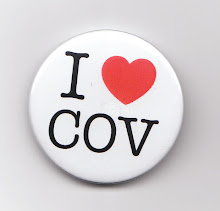
During the summer a school in Crawley ran a class for young people age 8 and upwards which encourages them to participate in graffiti as an art form. The classes came as part of a council plan to combat problems the area has had with tag graffiti and instead educates them on the difference between graffiti as an art form and tag graffiti as criminal damage.
While this has been a controversial move with residents, it is an idea that embraces creativity in young people. Liz Hart, from the council's community arts team, said: "Graffiti is a really popular with young people. It is considered an art form. Graffiti projects that we have run in the past have been very popular and successful which is why we are running another one this year.
The fundamental thing to see is that it is a legitimate art form, we tell them it is not to be done outside the workshop and the young people who take part would not consider going out to tag a bus stop, wall or whatever. When we do the workshops we provide canvas for the young people to work on. They love it. It is a really positive thing. They use the sessions to promote messages, such as anti drugs posters, sex and relationships. I can understand that some residents may be worried but I can assure them the young people will be told the difference between vandalism and graffiti as an art form."
Local newspaper, Crawley News reports that the move has been unpopular in the community, "One resident, who did not want to be named, contacted the News to express his anger at the graffiti class.
The Southgate resident, who says his area has been plagued by graffiti recently, said: "It is disgusting, it beggars belief really. I can't believe they spend all this money a year on clearing the mess up, and having a hotline for residents to report the graffiti, only to hold a workshop encouraging children to do it. What next? How to break into someone's car?"
Graffiti has been a problem in the area and the council spent spent £37,700 towards clearing graffiti in the town in between 2008 and 2009. However I feel this is an idea that I feel areas with graffiti problems should consider. Firstly the tag graffiti that residents fear is done by the least skilled graffiti artists. By teaching children spray painting skills, they become more talented painters who are more likely to showcase these skills in a more constructive way.
In providing the young people with the materials and a canvas to paint it means that they are less likely to spend the same time spray painting on the streets. Learning about graffiti as an art form and some of the famous artists and projects that have been created from graffiti is likely to encourage them to want to get involved in constructive projects. Giving young people a place to display and enhance their creative talents is key to reducing the problem of criminal damage. In my opinion this should only be the starting point and while graffiti is so relevant to young people they should be allocated free walls to graffiti and offered the opportunity to contribute their work to spaces in schools and playground areas.
This idea is obviously still in its early stages and we will see in time to come if it has a positive or negative effect on the town of Crawley but if it is a success this idea could be exported as far globally as local councils will allow. If any country has a graffiti problem and has a budget to spend on reducing the problem rather than just clean up operations then they could adopt an idea of this sort.
http://www.thisissussex.co.uk/crawley/news/politics/Crawley-council-offers-classes-teach-young-people-create-graffiti/article-1219144-detail/article.html
http://www.thesun.co.uk/sol/homepage/news/2575366/Town-gives-kids-graffiti-classes.html




